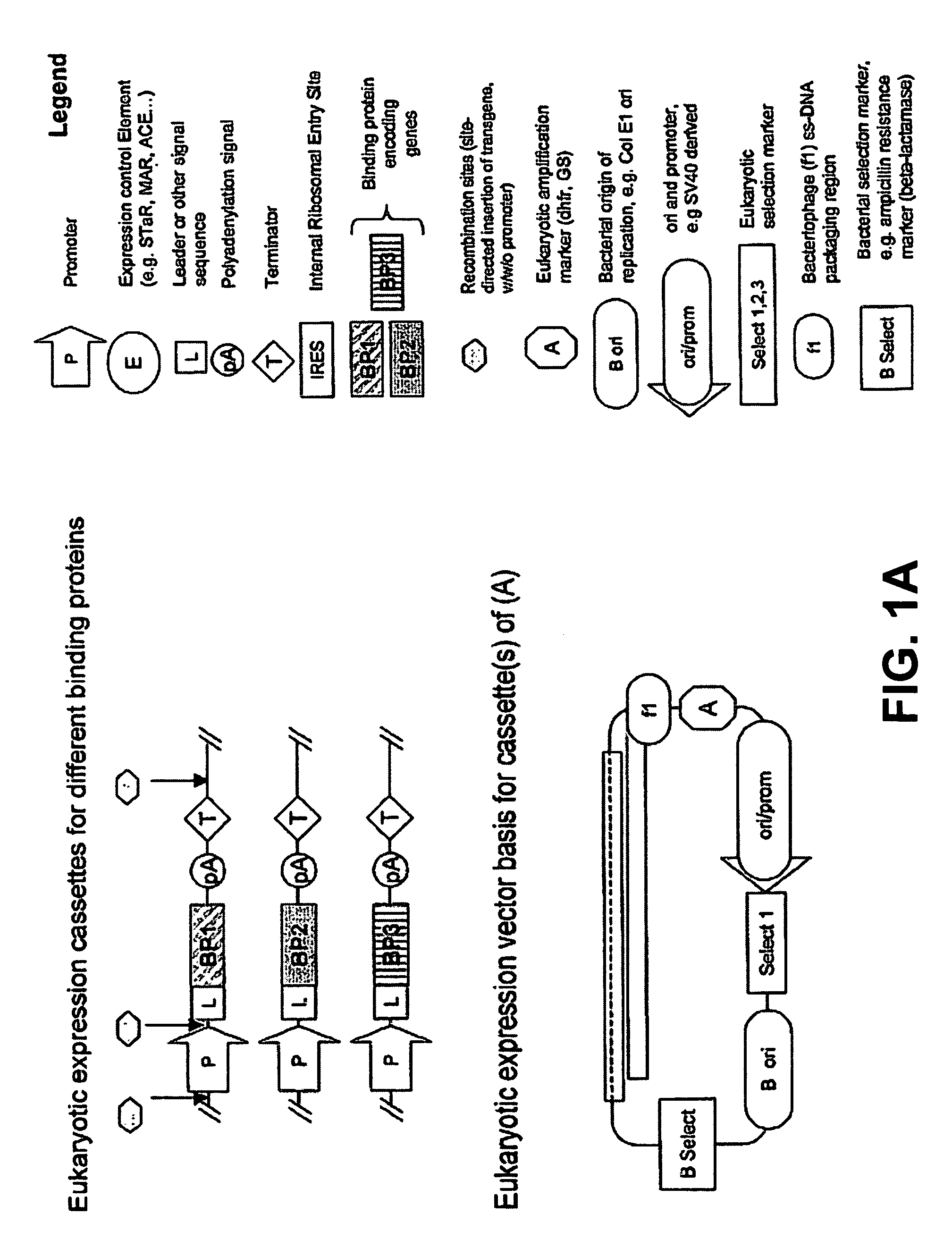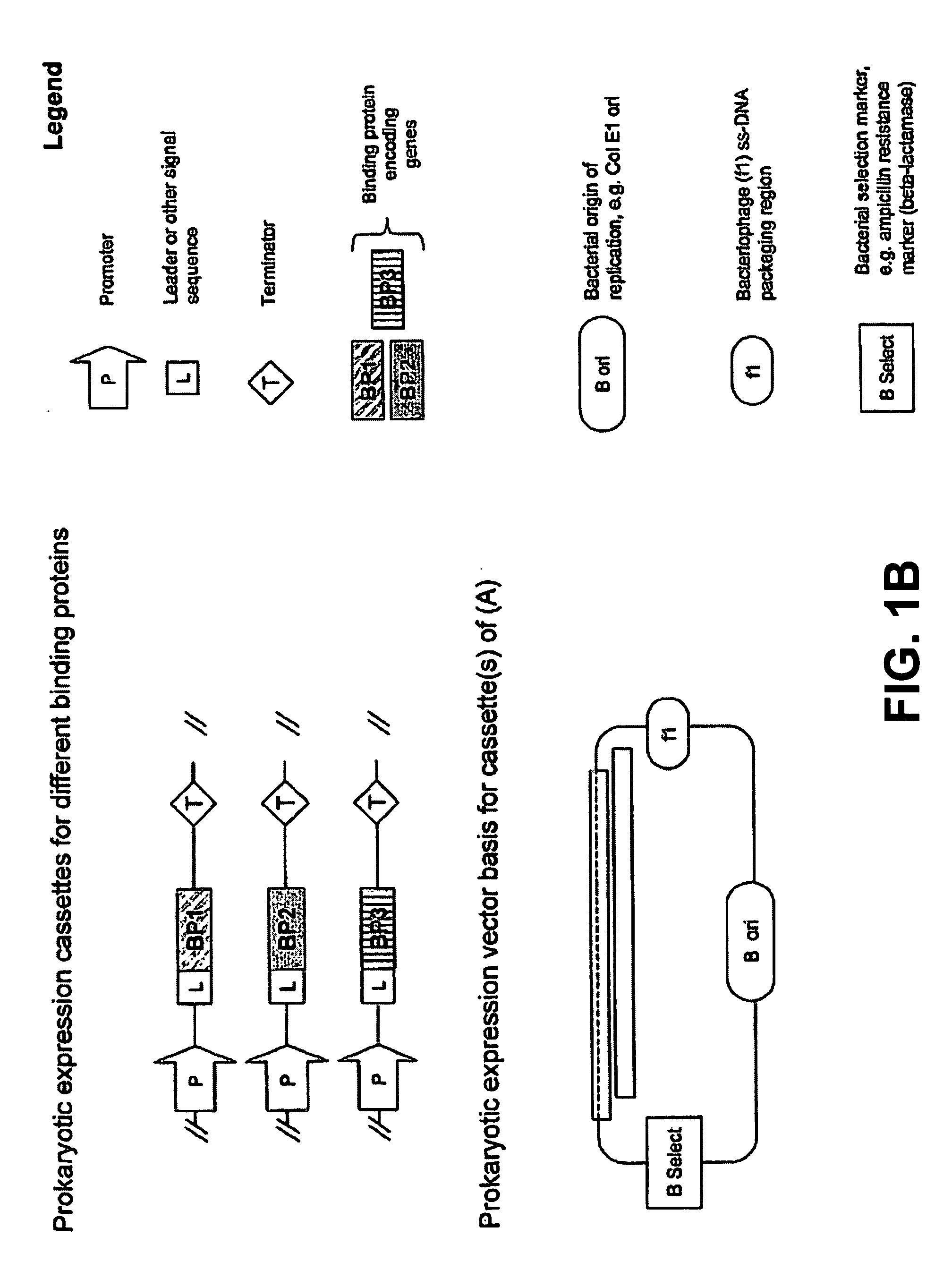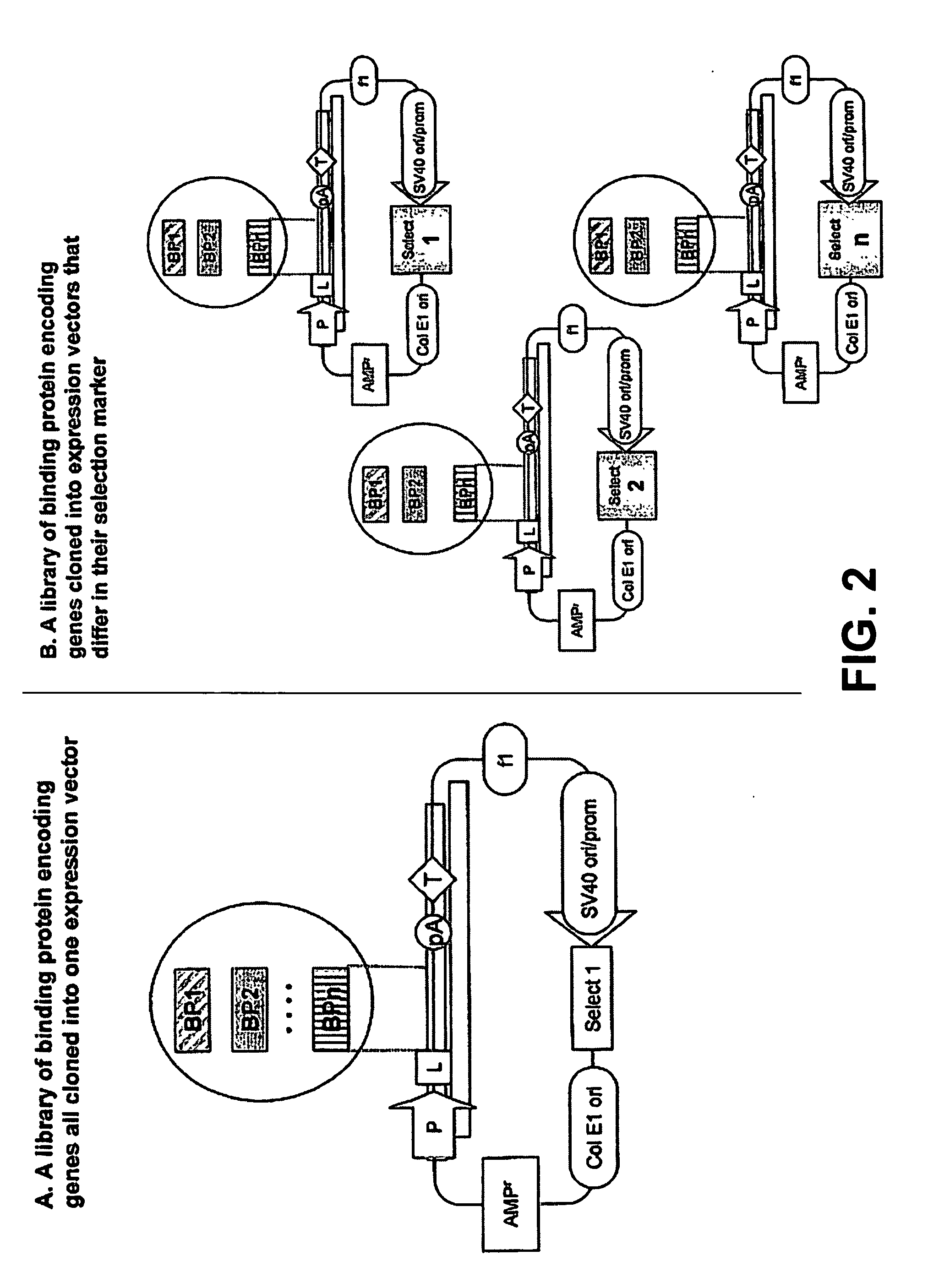Mixture of binding proteins
- Summary
- Abstract
- Description
- Claims
- Application Information
AI Technical Summary
Benefits of technology
Problems solved by technology
Method used
Image
Examples
example 1
Mammalian Expression Vector for Directing the Co-Expression of Two Anticalins
[0217] A starting point for making a mixture of two SPCBPs by expression from a single mammalian expression vector, is plasmid pRRV (a derivative of VHExpress and described in US 20030224408A1). pRRV (FIG. 7B) is a plasmid that is used for the expression of antibodies in the IgG format, by co-expression of light and heavy chains under control of a single CMV promoter and the two coding regions separated by an IRES sequence. The plasmid contains a series of unique restriction sites for cloning of SPCBP genes.
[0218] Two SPCBP genes are cloned by directional cloning of the coding regions into the ApaLI & AscI and BssHII & BclI restriction sites of pRRV. As an example the cloning of two anticalins is described, but equally well other SPCBPs can be cloned with the same procedure. If internal sites for the restriction enzymes are found in the SPCBP gene of interest, they can be swiftly removed by site-directed ...
example 2
Expression Vectors for the Co-Expression of Three Camelid VHH Proteins
[0221] In this example, the expression vectors for simultaneous expression of three binding proteins derived from a dromedary / camel heavy chain only antibodies and all having specificity for lysozyme of different species is described.
[0222] cAb-1. Antibody cAb-Lys3 is a “VHH” that inhibits hen egg-white lysozyme and its structure in complex with antigen was determined by crystallography (A. Desmyter et al. (1996) Nat. Struct. Biol. 3:803-811; T. R. Transue et al. (1998) Proteins 32:515-522).
[0223] cAb-2. The second antibody is cAb-TEM02 described in K. Conrath et al. (2001) J. Biol. Chem. 276:7346-7350.
[0224] cAb-3. The third binding protein is a VHH antibody, clone cAb-HuL6, a fragment derived from a dromedary “heavy chain” antibody with high specificity for native human lysozyme and its amyloidogenic variants (M. Dumoulin et al. (2002) Protein Sci. 11:500-515). The protein was shown to inhibit the formation ...
example 3
Production of a Library of Cells Expression Two and Three Different Cabs in Different Ratios
[0228] Plasmids p1-cAb1 and p2-ST-cAb2 / 3 are used for making multiple stable transfectants. Plasmid p2-ST-cAb2 / 3 is transfected alone or in combination with plasmid p1-cAb1. By selection using the neo-resistance gene and culturing and screening methods known to those in the art, stable PER.C6 derived cell lines expressing the two or three cAb-s and in different ratios are obtained. Essentially 5×106 PER.C6 M cells are transfected using Lipofectamine according to the manufacturer's instructions, and 3 micrograms of DNA of the plasmid (or 2+1 microgram if the two are used together). After five hours, the cells are washed and the medium is exchanged with non-selective medium. The next day the medium is replaced with fresh medium containing 500 microgram / ml G418 (Sigma-Aldrich) and also every next two to three days the culture medium is refreshed until clones appear (15 to 20 days after seeding)...
PUM
| Property | Measurement | Unit |
|---|---|---|
| Fraction | aaaaa | aaaaa |
| Nucleic acid sequence | aaaaa | aaaaa |
| Antagonistic activity | aaaaa | aaaaa |
Abstract
Description
Claims
Application Information
 Login to View More
Login to View More - R&D
- Intellectual Property
- Life Sciences
- Materials
- Tech Scout
- Unparalleled Data Quality
- Higher Quality Content
- 60% Fewer Hallucinations
Browse by: Latest US Patents, China's latest patents, Technical Efficacy Thesaurus, Application Domain, Technology Topic, Popular Technical Reports.
© 2025 PatSnap. All rights reserved.Legal|Privacy policy|Modern Slavery Act Transparency Statement|Sitemap|About US| Contact US: help@patsnap.com



